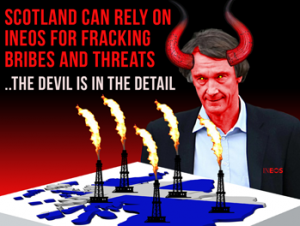International Markets Prove Hard To Conquer For U.S. LNG
From an Article by Irina Slav, OilPrice.com, May 19, 2016
The latest drilling productivity report from the Energy Information Administration (EIA) has shown that the Marcellus shale continues to be the largest source of natural gas in the U.S. by a wide margin, with daily amounts that put it on par with leading international producers such as Iran and Qatar. This is despite a serious dip in production that began last year as the market became saturated and prices plunged.
The domestic gas market is still saturated, according to the EIA, which has projected that gas output in the Marcellus and elsewhere will continue to decline. International markets are the natural alternative for shale gas producers, but there are a few issues with this alternative, and these issues mean that the huge output in the Marcellus is not such good news.
First, there is the competition. The European market is an attractive destination for U.S. gas as it is looking to diversify away from Russia’s Gazprom. Asia, with its high levels of demand, is also an attractive prospect. However, there are suppliers with an established presence in both these markets, which are likely to cut prices in a bid to preserve their market share. U.S. exporters, on the other hand, have less space for maneuvering.
The only way U.S. companies can transport their gas is after liquefying it and shipping it to Europe or Asia. Cheniere Energy is already doing this. There are several liquefaction terminals in construction across the country, driven by hopes for gas demand growth across the world. However, these hopes have not yet proved realistic. To complicate things further, pipeline projects at home are being delayed, adding to the pressure on gas producers.
There is a glut on the international gas market comparable to that in oil, although various sources claim the oil glut is on the wane with the recent production outages in Canada and Nigeria.
Last month, Barclays’ Commodity Research unit issued a note, in which its analyst team said: “Given limited amounts of incremental demand in the premium markets of Asia, the Middle East and South America, increasing volumes of LNG will likely be imported into Europe, especially northwest Europe, given the region’s liquidity relative to other global gas markets (the UK, Belgium, the Netherlands).” The analysts went on to add: “However, the LNG glut will converge on Europe, meaning Europe’s prices will likely decline.”
If European gas prices drop any further, U.S. gas will be unable to compete with current suppliers, which use an extensive pipeline system to feed gas into Europe at lower than LNG shipping rates. Maybe the best solution to the glut is the most obvious one: cut production, let the market rebalance, and try to survive in the meantime.
See also: www.FrackCheckWV.net


{ 1 comment… read it below or add one }
http://www.kallanishenergy.com/2016/05/19/ineos-estimates-2-year-timeframe-uk-shale-exploration/
Ineos estimates 2-year timeframe for UK shale exploration
From an Article of Kallanish Energy, May 19, 2016
Switzerland-based, UK-registered petrochemical giant, Ineos estimates it can begin exploring its unconventional oil and gas reserves within two years, from environmental studies to hydraulic fracturing, according to the company’s operations director, Tom Pickering.
Speaking at the Shale World UK conference in London, Pickering defended the timescale as “possible” using 2D seismic data and vertical drilling, Kallanish Energy reports.
Ineos, which was the first European company to import U.S. shale gas from the Marcellus Shale play in Pennsylvania, is confident the UK’s government support towards development of a shale gas industry could transform the country’s manufacturing sector.
Late last year, Ineos was awarded 21 new shale gas licenses in the UK’s 14th licensing round, positioning itself as the UK’s leading shale gas company. The majority of licenses are located in old mining regions of the North West, North Yorkshire and the East Midlands, all with a heritage of energy and feedstock production.
Following in the steps of U.S. producers, Pickering said Ineos will pay 6% of the company’s revenues, or roughly £2.5 billion ($3.65 billion) to local communities under a “local sharing reward scheme.” Despite the program’s aim to attract local support, the company has faced persistent resistance and protests.
The petrochemical giant, with plants in Scotland, uses 2% of the UK’s total gas supply and generates around 4% of Scotland’s GDP (gross domestic product), the director added.
With the Scottish moratorium on all planning consents for unconventional oil and gas extraction, including hydraulic fracturing (fracking), Pickering said Ineos will concentrate efforts on the three other areas where it holds licenses.
Until there’s a consultation completion in 2017, there’s no possibility to commercially frack in Scotland,” he said.
See also: http://www.FrackCheckWV.net